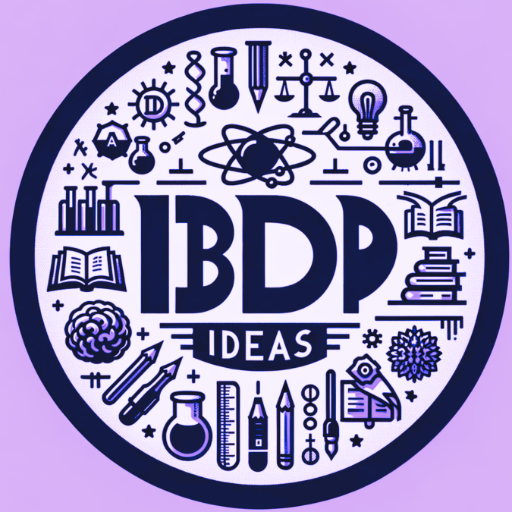Sales Forecast Genius-AI-powered sales forecast tool
Transforming sales predictions with AI insights
Calculate my team’s forecast
What KPIs do you need for this AI assistant?
How do you calculate the end-of-year forecast prediction?
Rank all salespeople based on AOV disparity
Related Tools
Load More
Future Forecast
Advanced predictive analysis tool

Sales - 10K Analyzer for Strategic Selling
A sales MUST! Bespoke GPT analyzes docs & helps strategically sell YOUR product or service in SECONDS. Create cold emails, scripts, marketing, or sales messaging. Share a 10-K, financial discourse along with your products details and let's start sellin

Business Plan Expert
Expert in creating interactive business plans.

Sales Manager
Oversees regional sales teams, setting goals and strategies based on market intelligence and management practices.

Inventory Forecast Mentor
Mentor and assistant in inventory planning and demand forecasting.

Financial Projections Wizard
I help you create financial projections for your business plans or presentations fast.
20.0 / 5 (200 votes)
Introduction to Sales Forecast Genius
Sales Forecast Genius, also known as Algorithmic Sales Forecaster, is a specialized AI tool designed for Sales Leaders who need accurate sales forecasts and actionable insights. The primary purpose of this tool is to calculate end-of-year sales target performance and provide strategic recommendations for improving those numbers. For example, if a sales team is halfway through the fiscal year and a Sales Leader wants to know if they are on track to meet their targets, Sales Forecast Genius can take current sales data, win rates, and pipeline information to project the end-of-year outcome. This projection helps Sales Leaders adjust their strategies in real time, ensuring they meet or exceed their sales goals.

Main Functions of Sales Forecast Genius
Sales Forecast Calculation
Example
A sales team with diverse product lines needs to forecast year-end performance across all lines. By inputting current sales data, win rates, and pipeline values into Sales Forecast Genius, the AI calculates each salesperson’s projected performance and aggregates these into a total team forecast.
Scenario
A Sales Leader uses this function at the end of Q2 to determine whether the team is likely to meet its annual targets. Based on the forecast, they might decide to reallocate resources or focus training on underperforming team members.
Performance Analysis and Variance Identification
Example
After calculating forecasts, Sales Forecast Genius analyzes the variance in performance among team members. For instance, if two salespeople have similar pipeline values but vastly different win rates, the AI highlights this discrepancy.
Scenario
A Sales Leader discovers through this analysis that one of their salespeople is struggling with closing deals despite a robust pipeline. This insight leads to targeted coaching to improve their closing strategies.
Insight Generation and Recommendations
Example
Based on the performance analysis, Sales Forecast Genius generates tailored insights and recommendations. For example, if the AI detects a large disparity between AOV won and AOV in the pipeline, it may suggest revising the qualification process for leads.
Scenario
A Sales Leader receives a recommendation to implement a new lead qualification framework after the AI identifies that many high-value deals in the pipeline are not being closed. This leads to a significant improvement in the close rate over the next quarter.
Ideal Users of Sales Forecast Genius
Sales Leaders and Managers
These users are responsible for meeting sales targets and managing teams. Sales Forecast Genius provides them with the tools to accurately forecast sales outcomes, analyze team performance, and implement strategies to improve results. They benefit from the AI’s ability to provide detailed performance insights and actionable recommendations, ensuring they can lead their teams to success.
Business Analysts and Sales Operations Professionals
These professionals support sales teams by providing data analysis and insights. Sales Forecast Genius helps them by automating the complex calculations needed for accurate sales forecasting and performance analysis. The AI’s ability to quickly identify trends and variances allows them to focus on strategic initiatives, such as optimizing sales processes or reallocating resources.

How to Use Sales Forecast Genius
Step 1
Visit aichatonline.org for a free trial without login; no need for ChatGPT Plus.
Step 2
Gather and prepare KPI data for each salesperson, including current sales, forecasted sales, win rates, and other relevant metrics such as the number of deals won/lost and average order value (AOV).
Step 3
Input or upload the prepared KPI data into the system. You can use text files, Excel sheets, or simply copy and paste the data directly into the platform's interface.
Step 4
Specify the current month of the target year to allow accurate calculation of year-end forecasts. This helps in determining the remaining months and adjusting the forecast accordingly.
Step 5
Review the calculated forecasts and insights provided by Sales Forecast Genius. Use these insights to identify training needs, reallocate resources, or refine sales strategies to improve overall team performance.
Try other advanced and practical GPTs
Sales Playbook
AI-Powered Sales Optimization Tool
Vivi by onmi
AI Meets AR: Explore, Create, and Connect.

Ebay Listing Expert
AI-powered eBay listing optimization.
eBay Listing Tool
AI-powered eBay listing optimization.

German Language Coach
AI-Powered German Learning for Beginners

jepeto
Empowering Creativity with AI-Driven Insights

Amélioration de texte
AI-powered text enhancement made easy.

Dubbing Translator
AI-Powered Video Dubbing Made Easy

Corretor de Textos em Português
AI-powered Portuguese Text Correction

IBDP IA Grader-GPT(IB Diploma IA)
AI-powered IB IA Grading and Feedback

Diploma-GPT(IB Diploma)
Enhance IB Teaching with AI Power

IBDP IA&EE Ideas-GPT(IB Diploma IA/EE)
AI-Powered Ideas and Guidance for IB

- Resource Allocation
- Performance Metrics
- Team Analysis
- Sales Forecasting
- KPI Tracking
Frequently Asked Questions about Sales Forecast Genius
What type of data does Sales Forecast Genius require?
The tool requires KPI data including current sales, forecasted sales, win rates, number of deals won/lost, and ideally, the average order value (AOV) of both won and lost deals. Additional KPIs specific to roles can also be beneficial for deeper insights.
How does Sales Forecast Genius calculate end-of-year sales predictions?
Sales Forecast Genius uses a combination of current sales, forecasted sales, and win rates to project end-of-year sales. The core calculation is based on the sum of current sales and the product of pipeline value and win rate.
Can Sales Forecast Genius identify underperforming sales team members?
Yes, the tool analyzes performance variance among team members, helping to identify high performers and those who may need additional support or training. It uses data such as win/loss rates and AOV to pinpoint areas needing improvement.
What are some common use cases for Sales Forecast Genius?
Common use cases include forecasting end-of-year sales, analyzing team performance, identifying training needs, reallocating resources, and optimizing sales strategies based on data-driven insights.
Is Sales Forecast Genius suitable for all types of sales teams?
Yes, the tool is designed to be versatile and can be used across different types of sales teams, including new business sales, account management, and cross-selling teams. It can accommodate various KPIs and adapt to specific sales processes.